Introduction |
In the story about Tan Goan Piauw and his wife Thung Leng Nio, I had gathered all the stories told by my family about Gedong Dalam in one chapter. After the first version of the story about Tan Goan Piauw was published online at the Kan-Han-Tan website, photographs and stories about Gedong Dalam were sent to me from Indonesia as response. These photographs and stories were a welcome addition to the main story. So as the story was updated, that new information was incorporated. After the update even more information was received, however to incorporate this information would make the chapter Gedong Dalam too large in comparison to the other chapters in the original story. Therefore it was decided to make a separate story about Gedong Dalam. Unfortunately some overlaps were in this case unavoidable. |
Gedong Dalam |
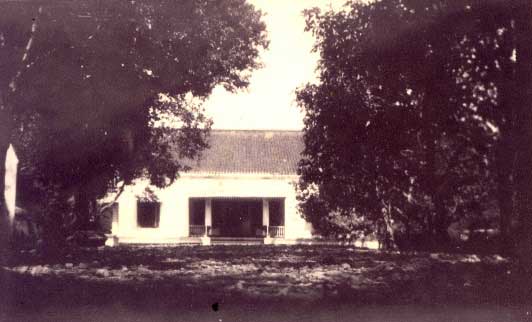 |
Gedong Dalam in Buitenzorg is built by my great-grandfather from mother‘s side Tan Goan Piauw, as the Tan family home. During this building process he had to consider restrictions (wijkenstelsel) for Chinese which were stipulated by the government of the Netherlands Indies. This meant that Chinese were to live in separate parts of town (Chinese Camps)and in typical Chinese houses. Gedong Dalam is built at the edge of the Chinese camp of Buitenzorg, the present Bogor and is situated just south of the Botanical Garden. Because of the long deep (Dalam) access to the house from the main street, the Handelsstraat, it was called Gedong Dalam. Since Tan Goan Piauw was a Captain China, the Kong Koan (Chinese Council) meetings were held in Gedong Dalam. Apparently a special room was reserved for such meetings of the Kong Koan of Buitenzorg / Bogor ever since. Back in 1966 a fellow student of the Universitas Indonesia who lived in Bogor responded on my story that my family had lived in Gedong Dalam: “Oh the house of the Kong Koan”. Unfortunately I didn’t ask him then whether the Kong Koan was still active. |
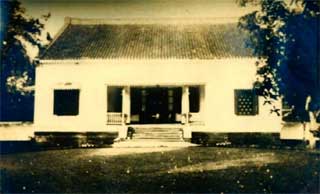 |
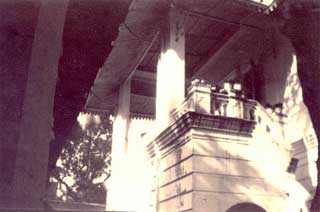 |
|
As seen from the street the front of Gedong Dalam appears as a typical Chinese house with an entrance in the middle. A roof parallel with the front with slightly upward sides. It was built bigger than any regular Chinese house in the camp and was decorated with marble tiles and pillars. |
||
|
The back garden was declining down towards the river. As a result there was a difference in ground level between front and the rear of the house. This slope enabled at the back side of the house the construction of an additional floor underneath the ground floor of the front side, underneath the living quarters of the house. |
||||
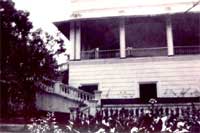 |
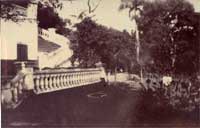 |
|||
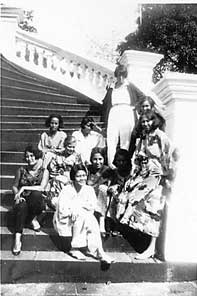 |
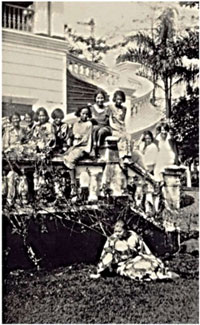 |
To get an impression of the scale of these staircases here two photos taken during an excursion of the Bataviasche Vrouwelijke Studenten Vereeniging (BVSV) at Gedong Dalam in July 1932. |
||
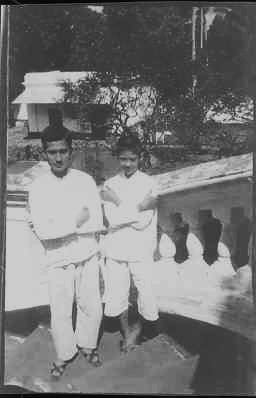 |
The difference in height between the first floor and the backyard is illustrated in this photograph. A pavilion can be seen down in the backyard. Tan Goan Piauw and Thung Leng Nio lived in Gedong Dalam till their death. Thereafter descendants of Tan Tjoen Gie and Tan Goan Hoat lived there. Later followed by poor family members(?). |
|||
(Foto Tan Eng Swie en Hardi Sumawinata |
||||
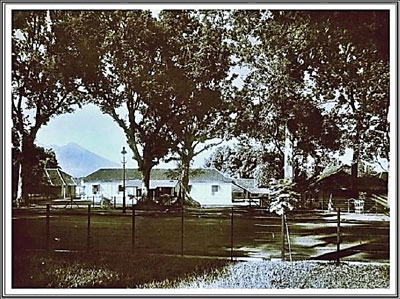 |
Such Paladio Style details in houses were reserved for white Europeans and actually at that time forbidden for Chinese. But these details were not visible from the street side. Later the building was enlarged both on left and right sides with an extension of the roof and an extra window and a porch above the front door. |
|||
As a result the layout of Gedong Dalam resembles the form of a cross, quite in accordance to a Palladio Villa. Anecdotes about Gedong Dalam:
|
||||
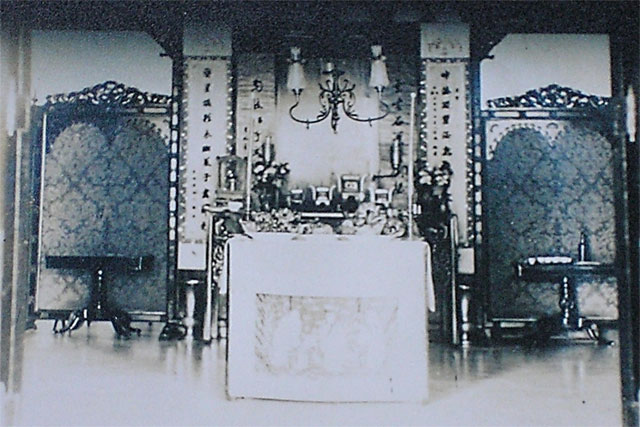 |
||||
|
||||
 |
At this moment the river is situated in the middle of the residential area “Kampung CinCau” (Tjeng Tjaw) that has been enlarged behind Gedong Dalam. |
|
|
Foto Hong Giap Gouw |
||
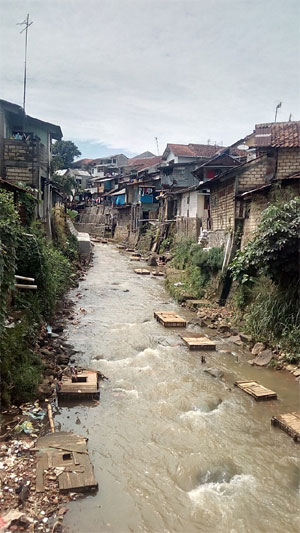 |
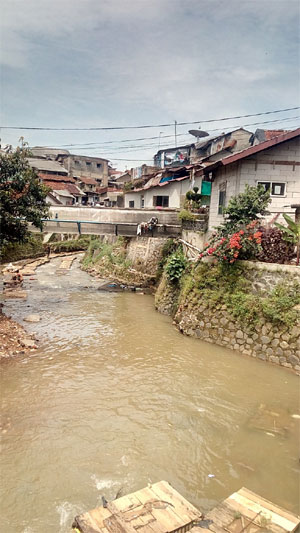 |
|
| On Google earth the Cipankancilan river can be seen as a meandering thin blue line just under Gedong Dalam Kong Koan Bogor. | ||
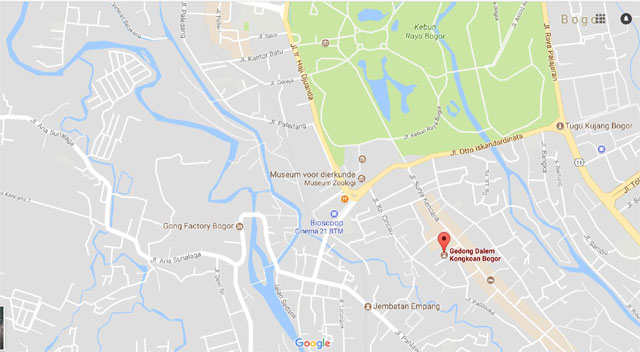 |
||
|
After the independence of Indonesia according to Hardi Sumawinata, a descendant of Tan Goan Hoat, Gedong Dalam was used by the Chung Hua Chung Hui and the Bogor branch of the Tiong Hwa Hue Koan. Also there were sports fields (badminton). |
||
| Foto’s van Hardi Sumawinata | ||
 |
 |
|
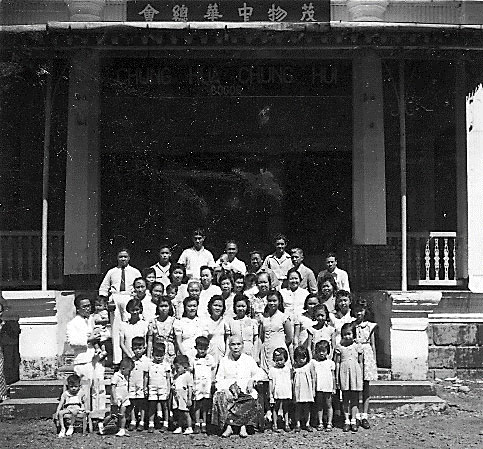 |
||
|
Quite recently I got some information about the residents of Gedong Dalam in the early 60's namely the so-called “Orang PP10”. They came from the regions adjacent to Bogor like Jasinga, Parung and Lewiliang and they lived mainly in the pavilions of Gedong Dalam. For me PP10 was the decree of President Sukarno in 1960 (Peraturan President 10 = PP10) in which he prohibited Chinese in villages and small cities to trade. Uptill recently I was unaware of the impact of this decree on the Chinese concerned. I know that my uncle's household Oei Biauw Ho was demolished by the crowd in 1960. So this year marked the beginning of the pogroms against Chinese. Recent information from Indonesia however, gave me more insight in the impact of PP10. Namely as a result of PP10 the Chinese in villages and small cities lost their means of living and were driven out of their homes. So such driven away Chinese (from the Tan family?) then came to live in the pavilions of Gedong Dalam. Probably those driven away Chinese were the poor Tan family mentioned earlier. They could however also be from the Thung family or totally strangers. According to Mario’s blog the last administrator of Gedong Dalam was Thung Tjoen Pok [Ciampea Bogor 1874 – 1942 Bogor ]. On these photographs Thung Tjoen Pok is the one with moustache and spectacles. The family is dressed in the so called Chángshān clothing (the traditional Chinese clothing around 1930). |
||
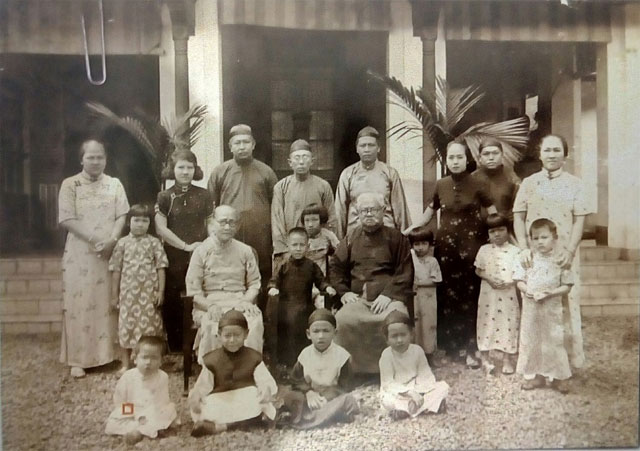 |
||
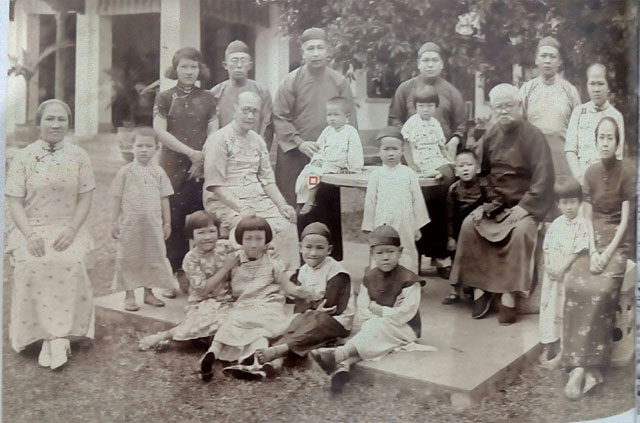 |
||
| After the coup of 1965, Gedung Dalam was confiscated by the Indonesian Government. According to Mario’s blog Gedong Dalam was used then as a tax office. | ||
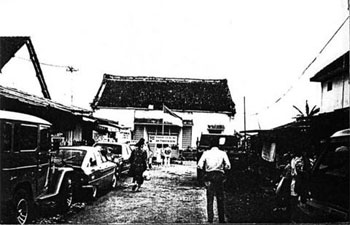 |
On the photo left the front of the building was closed with bars. Also two new buildings were built in the front garden. Also the front garden was turned into a street with parked cars (status 1965) From about 1965 till 1990 Gedong Dalam was not inhabited. A shopping mall was planned by the daughter of Suharto and Gedong Dalam was flattened. | |
But in the meantime Suharto was no longer president since 1998. So Gedong Dalam remained a ruin.. About the status of this ruin are several stories. It is now an illegal parking place and Pasar Bogor is extended on the garden area of Gedong Dalam. According to Mario’s Blog in 2008 if you enter from Jl. Surya Kencana (former Handelsstraat) the garden area of Gedong Dalam, one encounters a fence and this parking place. |
||
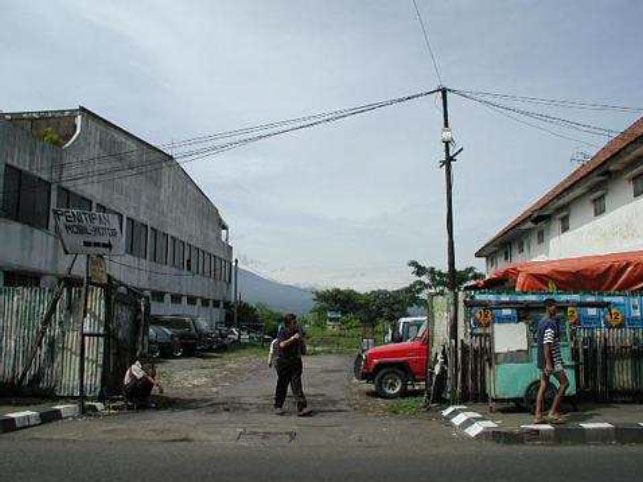 |
||
|
Behind the parking place there is no Gedong Dalam, but the two buildings which were built in 1965 are still there as can be seen on the photograph of Gedong Dalam as a tax office. The present owner according to Mario’s blog (2008) is Gus Dur. Gedong Dalam, as can be seen on photos made this year (2018), remained just as a ruin overgrown with trees and bushes and deprived of the marble tiles and pillars. This can also be seen on Google maps. |
||
|
The fence and parking place is still there: |
||||
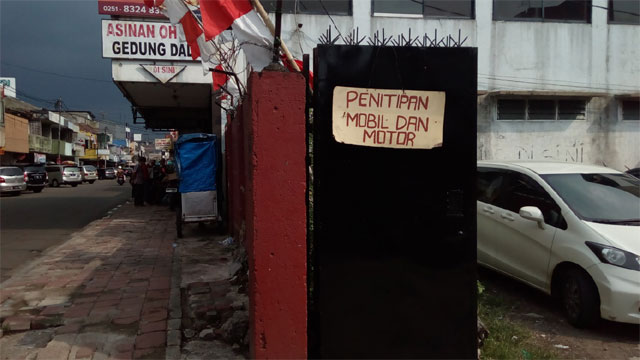 |
||||
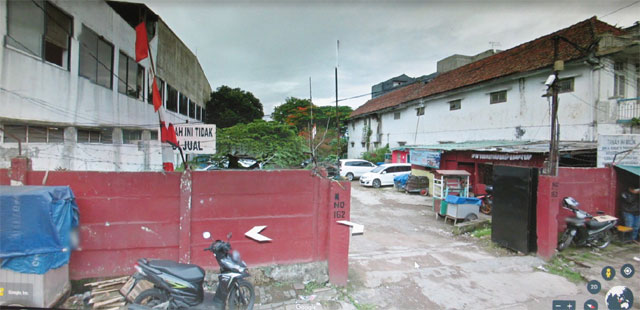 |
||||
|
The number 162 seen at the door posts is in accordance with the original address of Gedong Dalam. In this photograph are two signs; left and right: |
||||
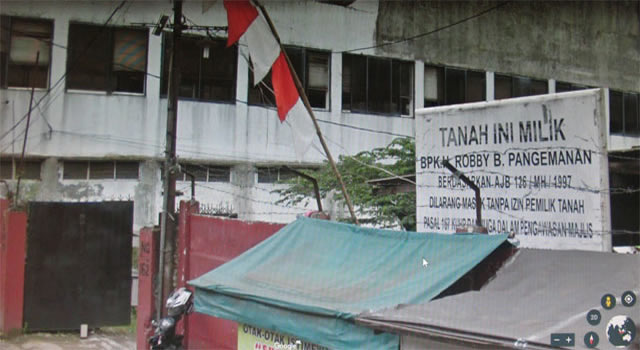 |
||||
|
Right: Tanah ini Milik BPK H. Robby B. Pangemanan ( this ground is propertiy of H. Robby B. Pangemanan). |
||||
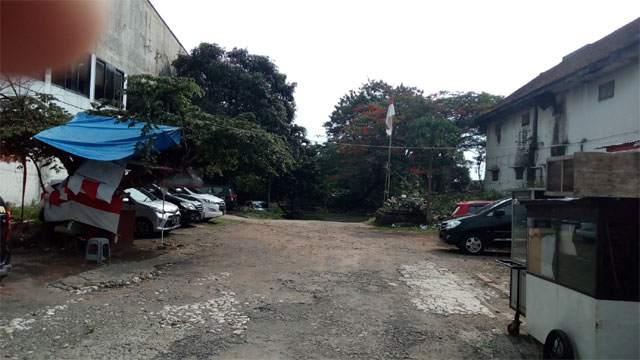 |
||||
|
Near the trees and the bushes one can notice some stones. |
||||
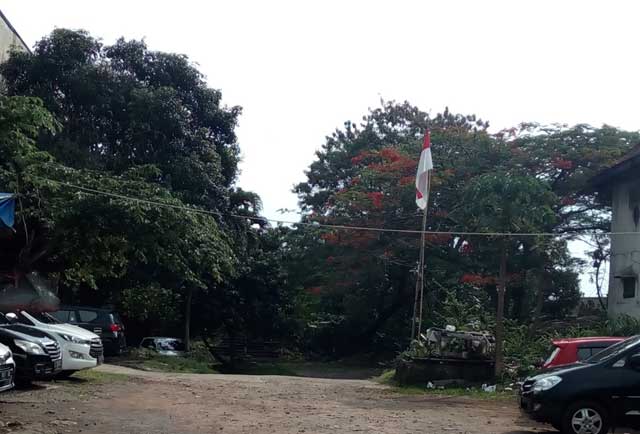 |
||||
|
These stones are the original staircase at the entrance of the building. |
||||
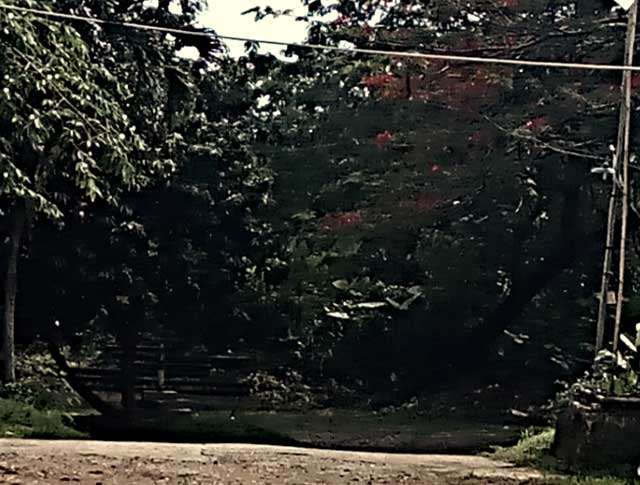 |
||||
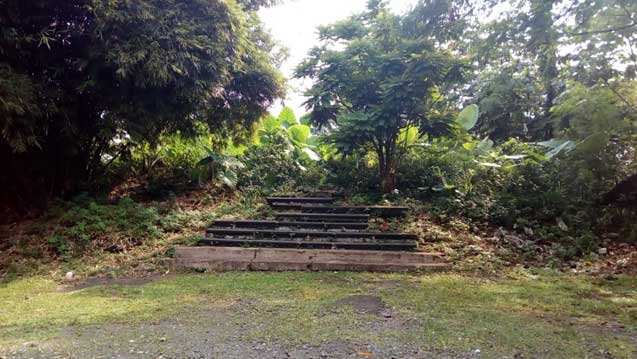 |
||||
|
In comparison to the historical map it can be seen that around Gedong Dalam many new buildings were built. These building are partially situated in the garden area of Gedong Dalam |
||||
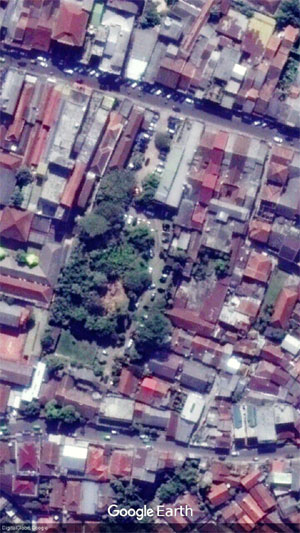 |
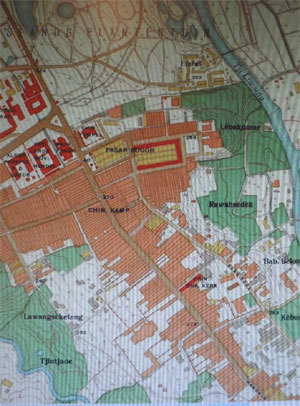 |
|||
|
On the Google map one can see that the ruin Gedong Dalam is sandwiched between two streets: Jl. Kampung Cin Cau. |
||||
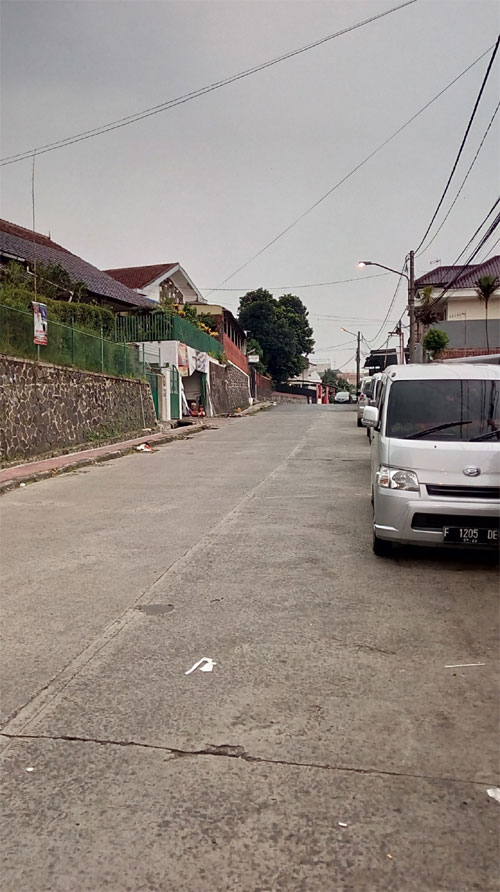 |
||||
|
Side street entrance to enter the former back garden of Gedong Dalam. |
||||
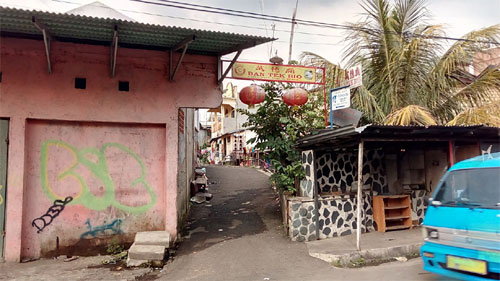 |
||||
|
First dead end street on the former back garden of Gedong Dalam. |
||||
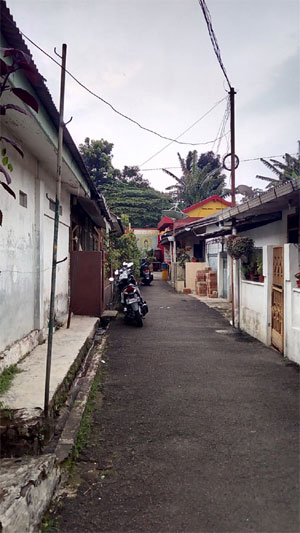 |
 |
|||
|
This Kuan Yin Temple has as an address Jl. Gedung Dalam no.6. A clear reference to the original courtyard of Gedong Dalam. Second dead end street on the former back garden of Gedong Dalam. |
||||
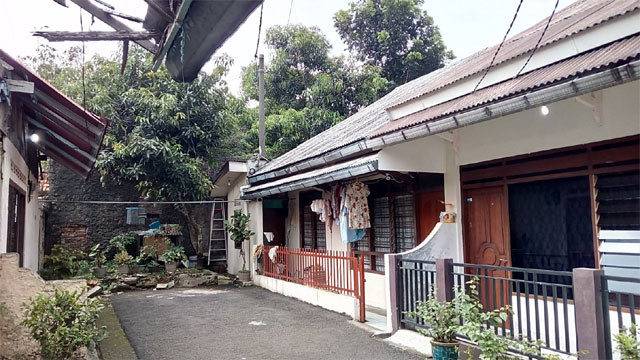 |
||||
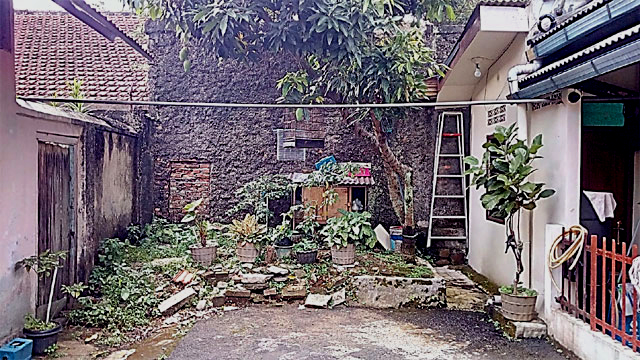 |
||||
|
Also behind this wall lies what remains of the garden of Gedong Dalam. Between the botanical garden and Gedong Dalam are also many new buildings. |
||||
|
Epiloque |
||||
|
This story was written to tell the history of an unique building in Indonesia, namely one of the few Paladio Villas. The building was destroyed for the sake to serve the anti-Chinese policy and racial preference of those in power. Also greed was an important factor. During the Suharto regime one had no eye for the unique status of this building. One important question that remains is the whereabouts of the archives of the Kong Koan Bogor. So we would be pleased if anyone knows, to be informed where the archives of the Kong Koan Bogor are nowadays.
Berkel, January 2018 |
||||
